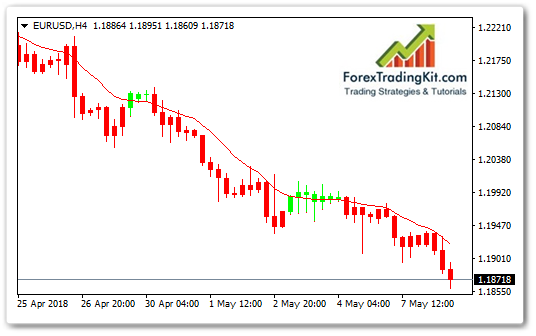Guide to Weighted Moving Average
In the previous article, we’ve learned Simple Moving Average. In this article, we’ll learn Weighted Moving Average.
Introduction to Weighted Moving Average
As already mentioned, one of the disadvantages of the conventional moving average is the assignment, when calculating it, to all prices of the same weights when averaging, regardless of whether they are closer or further from the current moment. This disadvantage is eliminated in the weighted moving average (Weighted Moving Average). The weighted moving average, therefore, is the usual modification of a simple moving average with weights matched so that the latest prices have an average greater weight.
Formula of Weighted Moving Average:

where Pi are the values of the price of the i-periods back, (i today = 1)
Wi of the weights for the price of the i-periods back
Weights can be chosen in different ways, for example, in the case of a linearly weighted moving average:
Wi = | in-1 | – the weight of the moving average is selected so that the latest prices have the maximum weight, and the longest ones – the minimum.
For example, for a linearly weighted moving average with period 5, the formula will look like this:

P1, P2, etc. prices today, yesterday, etc.
Weights can also vary in terms of a logarithmic or parabolic function. Prices can also be different: Close, Open, High, Low, Median Price, Typical Price.
A linearly-suspended moving average with a period of 14 is as follows:

Description of Weighted Moving Average
The weighted moving average is an arithmetic weighted price fluctuation for a certain period. As an analytical tool, it removes some of the shortcomings of the usual sliding but does not completely eliminate them. There are many modifications of the weighted moving average, using different variants of calculation of weights.
Usage of Weighted Moving Average
All forms of using the weighted moving average are similar to using the usual moving average.
Disadvantages of Weighted Moving Average
The delay at the entrance to the trend and at the exit from the trend is usually significant, but less than the simple sliding, because thanks to giving the latter prices of large scales, it reacts faster to price changes.
Like a simple sliding in the outset (trading range), the weighted one gives a lot of false signals and leads to losses.
When entering the price calculation, which is different from the price level in the market, the weighted moving average changes stronger than usual, since the last price is given the largest weight, however, when this price leaves the sliding one, a secondary false signal is not given.